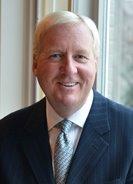Nonprofit Technology & Fundraising Blog
Subscribe to our mailing list
July 31, 2017 |

A Board member once asked me if I considered our major gifts donors to be “donors” or “partners.” I answered by saying they are both. Every nonprofit has donors, but the really successful ones expand their relationship with their constituents, especially their major donors, beyond the financial plane and nurture them as partners who can help move forward the organization’s mission. This relationship building happens while simultaneously employing moves management best practices to achieve our fundraising objectives while creating a culture of philanthropy and donor centricity.
When it comes to fundraising, nonprofits tend to allocate the majority of their time and energy on acquiring new donors. But let’s be honest, not nearly enough time is spent thinking about how to retain and grow donors, and that’s a missed opportunity. Being a donor has become part of our daily lives; think about how frequently you’re asked to support something. Whether it’s donating $1 at the pet store when checking out, or buying a begonia to help your neighborhood school, charitable giving is often reduced to a transaction instead of being a meaningful, participatory and ongoing experience. This is true not only in small, annual fund transactions but with major giving as well. We become focused n the next gift or next prospect instead of truly relationship building with our current donors. Oftentimes, what distinguishes a philanthropic experience is what happens after a donation is made.
Your organization would be well served to review what processes are set in motion when donors make major gifts. Because donors can feel like an organization’s checkbook, use the stewardship phase to further educate and engage donors. This helps them better understand the impact of their gift and prepares the groundwork for them becoming partners the next time they enter the donor cycle. Impactful and transformational giving occurs and is sustained when a donor sees a partnership as the natural outcome of your relationship and the basis for how their philanthropic investment will meaningfully impact your organization.
Keep in mind that the tools that were initially used to attract and cultivate major gift prospects tend to be set aside once they’ve become donors. Donor stewardship and re-engagement starts from the time the first gift is received and continues through the next request, building the relationship and engagement between the donor and your organization. Once a gift is received, and it is processed through your donor management database, it is important to respond to the donor in a timely manner and appreciate them in a way that is meaningful to them, not a way that is quick and easy for your organization. One size does not fit all here.
You would be surprised how a donor’s perspective changes once they understand how their gift has impacted your organization. This can be achieved through tailoring a personal experience within your organization for major donors such as a “behind the scenes” tour, special volunteer experience with staff and clients or a thank you from a respected peer. The quality of their experience, as well as how their gift impact is communicated to them, can solidify their deeper understanding of your programs and services thus create a deeper relationship with your organization, staff and mission. As a result, their giving may increase as they became a true partner and advocate of our organization within the community, championing you to potential new donors. In other words, through some extra care and personalization of the donor experience, the donor has transitioned from being a donor to becoming a partner who was vested in the success of your organization.
A comprehensive major gifts fundraising program is as strategic and genuine in its thanks, appreciation and ongoing engagement with its major donors as it is in its solicitation process. Make sure your organization has a thoughtfully designed program of acquisition, retention, stewardship and ultimately involvement of your key major donors. These elements are critical to strengthening relationships with the donors you already have, and ultimately, creating lasting partnerships from which your organization will benefit.

This post was contributed by Jeffrey Byrne, President & CEO Jeffrey Byrne + Associates, Inc.
About Jeffrey Byrne + Associates, Inc.
Founded in 2000 in Kansas City, Missouri, Jeffrey Byrne + Associates, Inc. is a nationally-recognized fundraising and financial development firm that specializes in building organizational capacity and conducting major gift, capital and endowment campaigns solely for nonprofit organizations. JB+A has helped more than 330 nonprofits raise more than $1,300,000,000. Learn more.
Follow us on social!